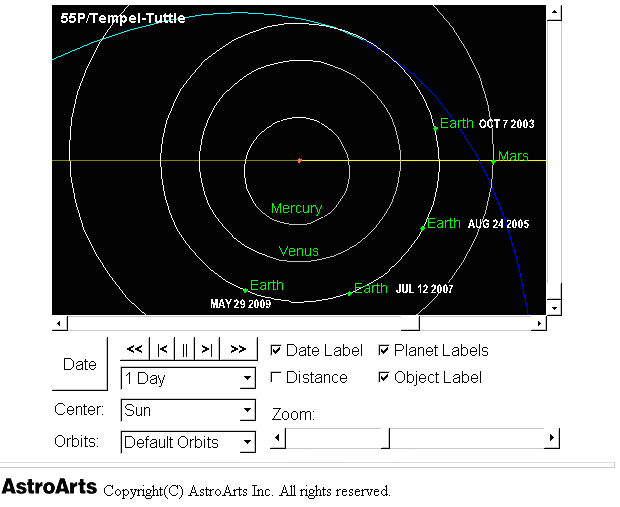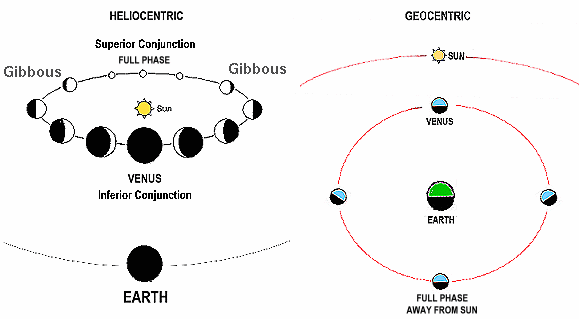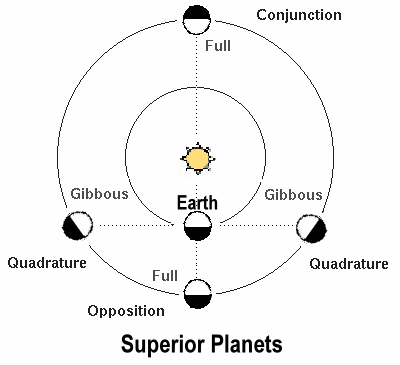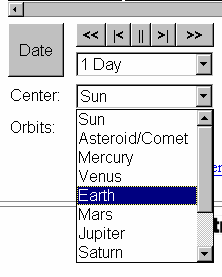Submitted to CAI on 15 November 2002:
In reply I offer the following brief RealVideo clip:
Kepler Finds
Earth's Orbit Around the Sun
It is a clip from a program titled The Mechanical Universe -
Kepler's Three
Laws, and is copyright 1985 by the California Institute of Technology.
Regarding your conditions of the proof:
- direct - yes, the results of the computations apparently lead directly to the conclusion that the Earth must orbit the sun, and not the other way around.
- observable - yes, Kepler reached his conclusion by observation of the orbit of Mars, and the relative positions of the Earth and the Sun.
- physical - yes, the conclusion was reached by direct observation of the physical orbit of Mars
- natural - yes, the conclusion was reached by direct observation of the natural physical orbit of Mars
- repeatable - yes, the experiment would be repeatable today following the same procedure.
- unambiguous - yes, I believe the video shows the results in an unambiguous way that simply cannot be explained in a way compatible with geocentrism.
- comprehensive - well you got me there if you want an out, as I am not actually providing any proof to you, but rather a graphic demonstration that is the apparent result of the proof. To qualify for comprehensive proof, I would have to provide you with the actual computations and logic that Kepler used, in a way you could understand and possibly refute, and I am admittedly not doing that. It is quite likely that neither you or I could fathom the computations or complex geometry in any case.
So I release you from the need to pay off based on this video clip, even if you decide to concede heliocentrism based on it alone, as unlikely as I think that may be (unless, of course you just feel irresistibly compelled to divest yourself of your $1000 with less than 100% of your conditions being met absolutely).
However, I do feel that this clip provides very strong evidence that the proof you require does exist, and perhaps someone who is an astrophysicist will be able to simplify the explanation enough to confirm the proof to you, though you may still be able to come up with some fantastic scenario that you feel is able to make it conform to geocentrism.
Conduct your own "experiment"
At the following web site you can, in a sense, duplicate Kepler's observations:
http://www.astroarts.com/simulation/cometary-orbit.php1. Enter 55P in the "Object Name" box.
2. Press "Search" button.
3. Press "Show Orbit" button.
4. Run the simulation to the following dates ( I have already done this, so you can just click on the links to see the results.)Oct 7, 2003
Aug 24, 2005
Jul 12, 2007
May 29, 2009So, the results for those four dates are all plotted on this graphic:
Now the following can be seen above:
Observations are made on the day that Mars returns to the exact same point in its orbit (here when it crosses the yellow line at the right. On those dates both the Sun and Mars are at the same fixed relative points, with the same distance between them. The Earth's position changes relative to both the Sun and Mars, tracing out an orbit around the Sun (proving heliocentrism).
(The blue orbital path is that of the comet Tempel-Tuttle, the dust trail of which is responsible for the Leonid meteor showers in mid-November each year. It can be ignored for the purposes of this study.)
Other points worth noting.
- Venus and Mercury are never observed very far from the Sun. Venus is always observed within 46° and Mercury within 28°, so they are only observed in the early morning or early evening (they basically rise and set with the sun). They are never seen on the opposite side of the earth from the sun.
- Venus and Mercury exhibit the full range of phases, like the moon, but the other planets do not. The reason for this is that Venus and Mercury have orbits closer to the Sun than the Earth (inferior orbits), the other planets have orbits farther away than the Earth (superior orbits).
- Venus and Mercury both exhibit a full / gibbous (half to full) phase when observed in the direction of the Sun (conjunction), but farthest from the Earth (smallest in the telescope). If they orbited the Earth (geocentric), we would never see a full phase when they are in the direction of the Sun, as illustrated below. This proves that Venus and Mercury orbit the Sun, and not the Earth. (See this animation) Galileo observed this first in late 1610, and concluded that Venus orbited the Sun. Geocentrism, he now knew, was wrong.



 4. Run the simulation as before, but in the "Center" drop down
menu, select "Earth" rather that "Sun". Note that the Earth appears to remain
stationary, and the Sun and all the other planets appear to revolve
around the Earth.
4. Run the simulation as before, but in the "Center" drop down
menu, select "Earth" rather that "Sun". Note that the Earth appears to remain
stationary, and the Sun and all the other planets appear to revolve
around the Earth.